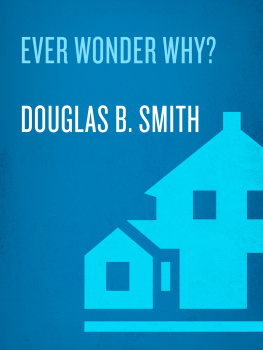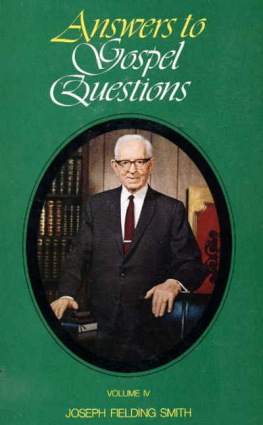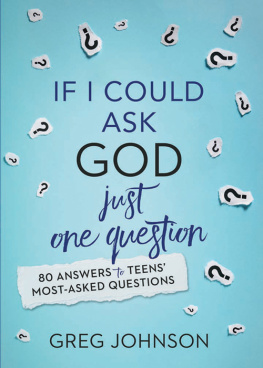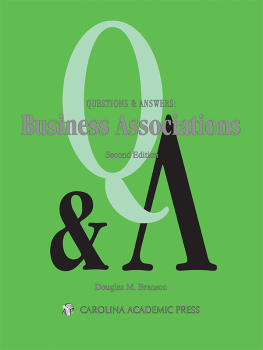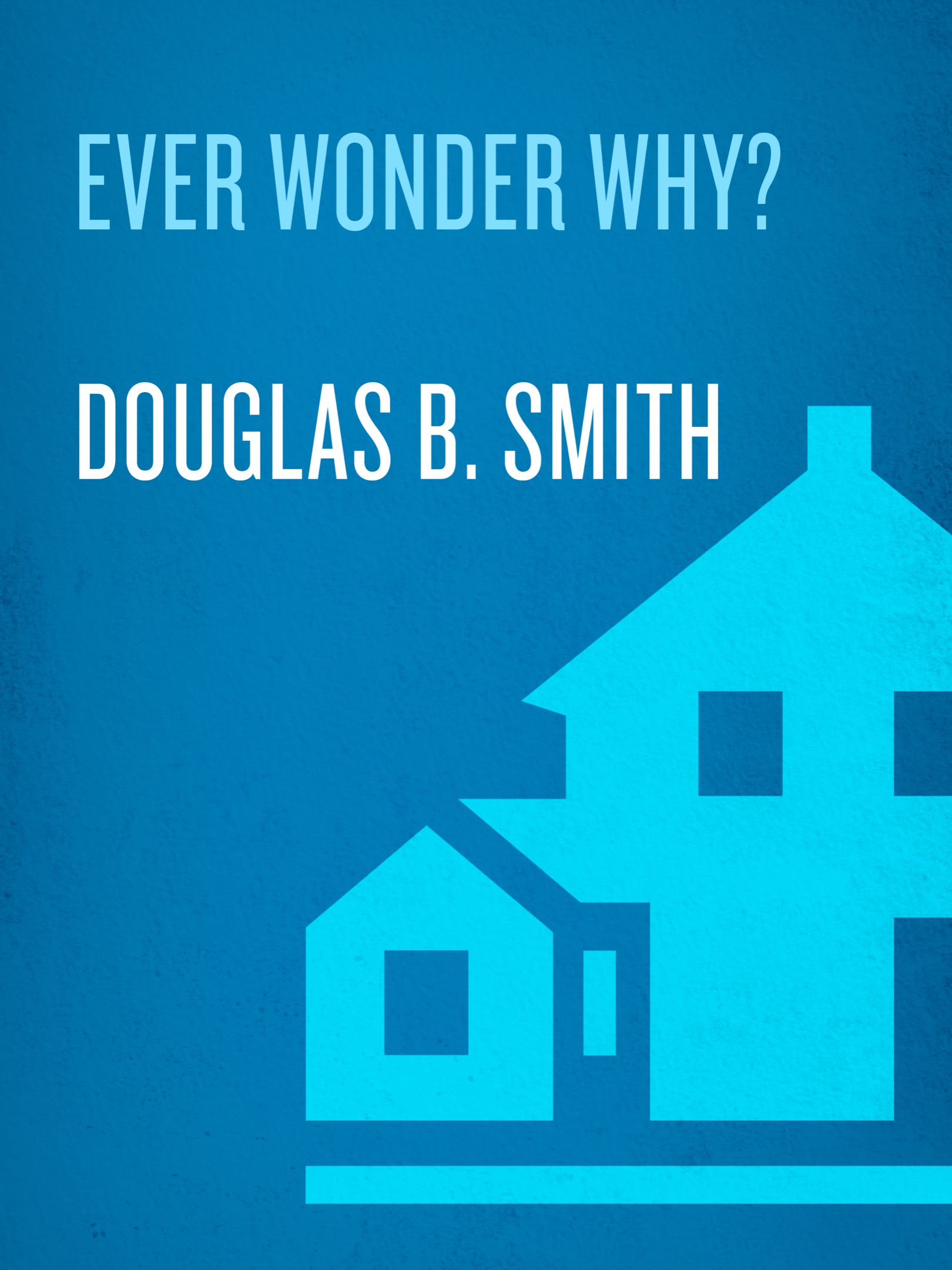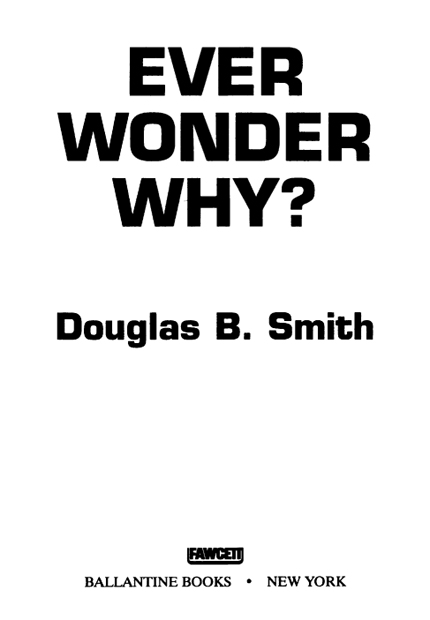Contents
Landmarks
EVER WONDER
HOW MUCH YOU KNOW?
1. Why is a wedding ring always worn on the third finger?
a. It was once thought to be the site of the vein of love.
b. It is the least-used finger of the five.
c. It is the easiest to measure for a fitting.
2. What is the origin of the phrase son of a gun?
a. The male children of gunslingers in the Old West.
b. Sons conceived on board a ship, where a secret rendezvous often took place near the midship gun.
c. Illegitimate children sired by soldiers during foreign wars.
3. Why do bats sleep upside down?
a. So blood will rush to their heads, helping them to see in the dark.
b. Heat rises, and thats how they keep warm.
c. So they can hang from the cave ceiling and avoid predators.
ANSWERS 1) a; 2) b; 3) c.
A Fawcett Book
Published by The Random House Publishing Group
Copyright 1991 by Douglas B. Smith
All rights reserved.
Published in the United States by Fawcett Books, an imprint of The Random House Publishing Group, a division of Random House, Inc., New York.
Fawcett is a registered trademark and the Fawcett colophon is a trademark of Random House, Inc.
randomhousebooks.com
Library of Congress Catalog Card Number: 91-92209
Ebook ISBN: 9780307834171
v3.1_r2
Contents
Preface
Ever wonder why books have prefaces?
The word preface comes from a Latin word praefatio, which means to speak before. The purpose of a preface, then, is to speak to the readers before they read the main part of the book and tell them what the book is about.
This is a book about WHY: why so many barns are red, why Southern men are nicknamed Bubba, why you never see cashew nuts in their shells, why breaking a mirror is seven years bad luck, why a square boxing enclosure is called a ring, and why you see those crescent moons carved into outhouses. If questions like these make you wonder, you will like this book. It answers about three hundred such questions, with the emphasis in every case being on why something is the way it is. Not who, what, when, where, or how, but why. Why? is the first question we learn to ask as children and the one our parents have the hardest time answering. This is because Why? is the most difficult question to research. Books and other publications answer lots of questions about their subjects, but for some reason not usually questions about why. A book on barns may not tell you why so many of them are red, a book on cats might not reveal why their eyes glow in the dark, and a book on marriage customs might not say why the bride stands on the grooms left. Because of this, why questions usually require a lot of digging in strange places. While it is true that some answers can be found rather quickly in obvious places like encyclopedias or other standard reference sources, more often they require research in obscure books, old periodicals, government documents, business publications, trade journals, and frequently consultation with one or more experts. Finding an acceptable answer can take days, months, or longer. For instance, the author has spent over two years trying to find an answer to the question of why yawns are contagious. So far, no luck.
On the other hand, there are times when too many answers can be found. That is, research turns up conflicting explanations from two or more seemingly unimpeachable sources. When this happens, the explanation about which there seems to be the greatest degree of consensus is the one used in this book. In the absence of such a consensus, the explanation that seems most plausible is the one used.
About half of the questions in this book were submitted by other people; the other half are questions that have intriguedand sometimes plaguedthe author during the past thirty years.
It has been the authors experience that almost everyone has a deep curiosity about the underlying reasons for the things they see about them. It was with this in mind that this book was written.
when a lady spurns a gentleman, she is said to be giving him the cold shoulder?
Despite current usage, the phrase does not have a romantic origin. In fact, the shoulder in cold shoulder is actually a shoulder of mutton!
In the early nineteenth century, when the phrase was first recorded by Sir Walter Scott, it was customary for a hostess to serve hot meat to visitors who were welcomed and cold meat to those who had overstayed their welcome. Since the cold meat given to the unwanted guest was usually a shoulder of mutton, the hostess was said to be giving him the cold shoulderof mutton, that is.
he-men sailors of old often wore earrings?
In the days of the wooden sailing ship, there was no certainty that sailors setting out on a long voyage would ever see their homeland again. To prepare for the worst, sailors took to wearing gold earrings so that if there was an accident and their bodies were found washed ashore on some foreign beach, the gold in the earrings would be used to pay for decent burials.
red is the traditional color for barns?
Late in the 1700s, American farmers began painting their barns with homemade wood preservatives to protect them from the weather. In the northern states where winters are particularly harsh, the preservative found to offer the best protection was one made from lime, skim milk, and red iron oxide. When this mixture dried, it gave the barn a durable, plasticlike finish. Because of the iron oxide, it also gave the barn a bright red color. The use of this preservative became so widespread that by the early 1800s red had become the traditional color for barns.
dimes, quarters, and half-dollars have notched edges, while pennies and nickels do not?
The U.S. Mint began putting notches on the edges of coins containing gold and silver to discourage holders of such coins from shaving off small quantities of the precious metals. Before coins were notched, shaving was a common practice, and at one point the problem was so bad that merchants refused to accept coins without first weighing them to determine their true value. Notching the coins corrected the problem since any attempt to shave a notched coin could be easily detected.
Dimes, quarters, and half-dollars are notched because they contain silver. There is no need to notch pennies and nickels since the metals they contain are not valuable enough to make shaving worth the effort.
corned beef is called corned beef when it contains no corn?
The corned in corned beef has nothing to do with the vegetable corn. It means preserved in salt. The salt pellets originally used to preserve this type of beef were called salt corns, and beef preserved in this way was called corned beef.
riders always mount their horses from the left?
The custom began centuries ago when men carried swords. Since most men are right-handed, the sword was usually carried on the left hip to make it more accessible to the right hand. With a long sword dangling from a riders left side, it was clearly easier for him to mount his horse by putting his left foot into the stirrup and then throwing his right leg across the horses back. This, of course, required that the horse be mounted from the left. Even after riders no longer carried swords, mounting from the left remained the custom.

